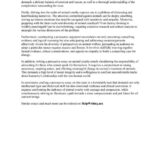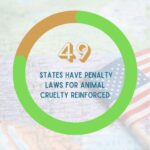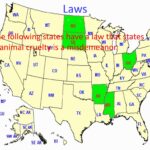As our society becomes increasingly aware of animal welfare, a profound quandary emerges among homesteaders and small-scale farmers: is it acceptable to kill one’s livestock for sustenance, or does this practice inherently constitute animal cruelty? This dilemma encapsulates a conflict of values, intersecting ethics, sustainability, and the fundamental instincts of survival. It is essential to delve into this intricate issue with sensitivity and an analytical mindset.
First, one must consider the definition of animal cruelty. Generally, it refers to the infliction of unnecessary suffering or the failure to provide care to animals. This perspective necessitates an examination of intent and the conditions under which animals are raised and slaughtered. A homesteader’s philosophy significantly colors their approach to livestock management. Those who prioritize the humane treatment of their animals often argue that if livestock are raised in a loving, healthy environment, their eventual slaughter—when approached with respect and purpose—can be seen as a natural cycle of life rather than a cruelty-laden act.
However, this perspective carries with it a heavy burden of responsibility. The act of raising animals for food demands not only ethical deliberation but also profound knowledge of animal husbandry. Livestock need appropriate diets, medical care, and ample space to engage in natural behaviors. The absence of these conditions can lead to a distressing existence for the animals involved, raising substantial ethical questions about the legitimacy of slaughtering such animals. A lack of understanding or negligence could easily transform what is intended to be an act of sustenance into a grievous instance of cruelty.
Furthermore, consider the emotional landscape of the homesteader themselves. The act of killing an animal that one has nurtured from birth can evoke significant cognitive dissonance. On one hand, homesteaders often perceive themselves as stewards of the land and animals; on the other, the act of slaughter can feel deeply antagonistic to the nurturing relationship they have cultivated. The psychological toll of this duality is profound, and a disconnect may arise between their agricultural practices and moral compasses.
Adding complexity to this matter is the influence of societal norms and cultural practices. In many cultures, the consumption of animal products has deep roots and is widely accepted. However, contemporary perspectives are increasingly challenging these traditions, advocating for plant-based diets or alternative protein sources. This cultural shift invokes an inner conflict among those who wish to uphold their traditional values while grappling with modern ethical considerations surrounding animal welfare.
Also worthy of consideration is the environmental aspect. Industrial agriculture has been widely criticized for its contributions to climate change and ecosystem degradation. In contrast, small-scale homesteading often promotes sustainable practices, potentially justifying the killing of livestock for food, as it is rooted in regenerative agriculture principles. Herein lies a compelling argument: homesteaders engaged in ethical animal husbandry might assert that their practices are more humane and environmentally sound than conventional factory farming. The differential here begs examination. Is the plight of livestock varied across the spectrum of agricultural practices, and does that affect the moral implications of killing them for food?
Despite these multiplicitous perspectives, it is crucial to remain clear-eyed about the fact that the act of slaughter, irrespective of context, results in the end of an animal’s life. So, what makes the act permissible in one context and reprehensible in another? One likely consideration is whether the life given is met with gratitude and acknowledgment. Ethical slaughter may thus hinge upon the respect shown to the animal during its life and at the time of its death—a ritual that honors its existence rather than commodifies it.
Homesteaders must reconcile their values with their actions. How do they define ethical treatment? Is it merely a matter of physical welfare, or does it extend to emotional well-being? These questions amplify the introspection necessary for making conscious choices. It is paramount to tread thoughtfully upon this tightrope, uncertain yet resolute in seeking a balance between sustenance and ethical responsibility.
For many, the solution lies not in finding definitive answers, but instead in continuously engaging with the questions at hand. Each homesteader must seek personal clarity, driven by empathy, respect for life, and a commitment to integrity. One might cultivate a deeper connection to their livestock, learning to appreciate the sacrifice involved in providing nourishment, thus transforming the act from one of brutality to one of honor.
In conclusion, the quandary of whether killing livestock constitutes animal cruelty reveals itself to be layered and multifaceted, requiring an ongoing dialogue. At the intersection of ethical frameworks, environmental concerns, and personal beliefs, homesteaders face a weighty decision that demands careful consideration. Ultimately, it is through reflection, understanding, and respect for both the animals raised and the land cultivated that one can begin to navigate this challenging terrain. The resolution may not rest in absolutes; rather, it may reside in the journey of seeking a deeper understanding and appreciation for life itself.







